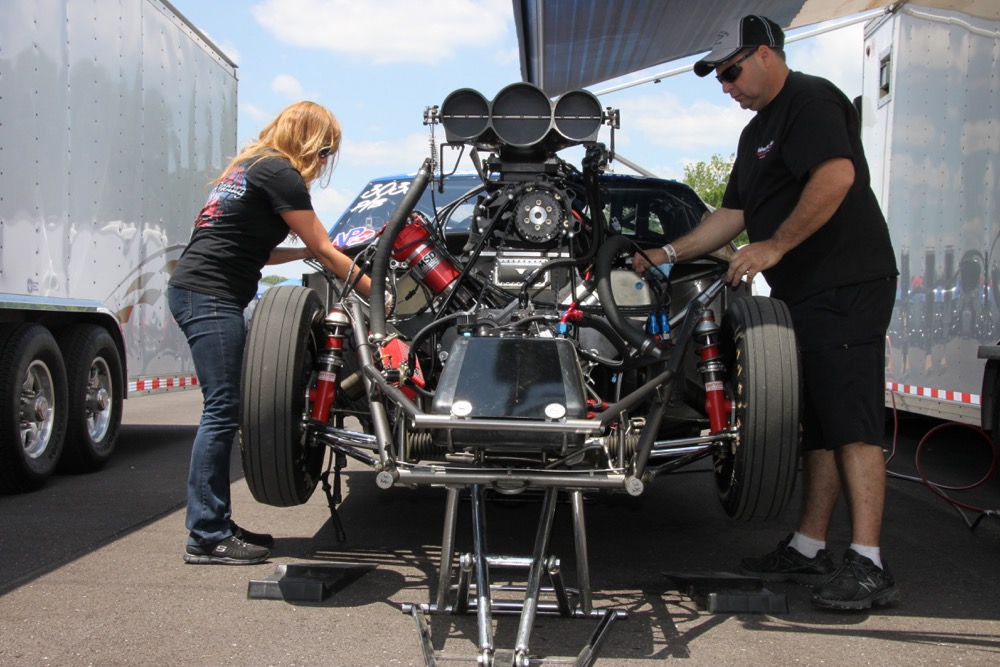
NORWALK, OH – We can’t control the weather. Just ask every bride, golfer or outdoor event planner, ever.
In most life situations, temperature and precipitation are the only weather-related things we must worry about. But drag racing isn’t most life situations.
In competitive drag racing where there is typically little margin for error, unpredictable conditions such as humidity levels, barometric pressure, or a 10-degree temperature swing due to cloud cover or time of day—not just in the air, but on the track surface as well—can be the difference between winning and losing a race.
Races are commonly won or lost by just a few thousandths of a second—a fraction of time too small for us mortals to register with our imperfect eyes and brains. Cutting good lights—a drag racer’s ability to launch their car off the starting line before their opponent when the Christmas tree lights turn green—is typically where those fractions of a second are gained or lost.
So, building a race car that can run consistent and predictable quarter-mile times without breaking down is undoubtedly the most important part of drag racing success. Driver skill and experience is likely next in line. But in situations where the cars and drivers are similar, the ability to tune the race car on the fly per the demands of the ever-changing air and track conditions, is what separates the trophy hoisters from the another-one-got-away storytellers.
The OnAllCylinders team wanted to talk to different race teams at a national event about what they focus on to tune their race cars during test-and-tune in preparation for qualifying and elimination rounds, so that’s what we did during Friday qualifying at the NMCA All-American Nationals at Summit Motorsports Park in Norwalk, OH.
Car Setup and Racing Class Provide Countless Variables
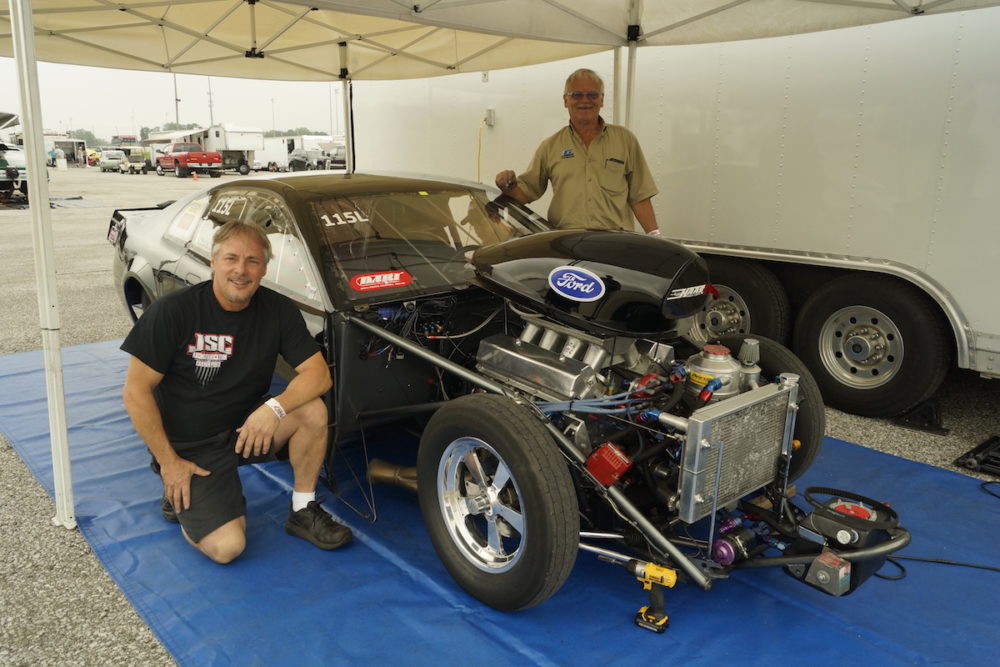
It will be obvious to long-time racers and engine tuners, but perhaps less so for drag-racing novices: While ALL drivers and race teams are subjected to the same weather—that same weather won’t impact all cars equally.
The more horsepower a race car makes, the more impact things like air temperature and humidity will have on performance.
Merv Moyer Jr., an Annville, PA native and driver of a Leonard Long-owned Pro Stock Ford Mustang that runs in the 7.20s (elapsed time, or ET in the quarter-mile) said his race team checks the track temperature before every run.
Last year at Lucas Oil Raceway in Indianapolis, IN, Moyer Jr. outran and eliminated an opponent that was two-tenths faster than him, and it was the between-rounds tuning adjustments which proved to be the difference. Air temperatures soared to the mid-90s Fahrenheit in Indy, which put the track temperature around 140 degrees before the run. An improper tune and car setup by his opponent is the reason Moyer Jr.’s ever-so-slightly slower race car won the head-to-head race that day, he said.
Moyer Jr. and his team download tons of vehicle data after every run at every track they visit, which is paired with the weather and track conditions in their historical data and tuning archives. He said he was racing at Maple Grove Raceway in Reading, PA last weekend and used that data as a starting point for his first visit to the track in Norwalk.
The tuning focus for Moyer Jr.’s Pro Stock Mustang tends to be on the clutch, he said.
“We start out with quite a bit of clutch,” he said. “We leave usually around 6,200 rpm—and you want the clutch soft when you leave.”
Centrifugal weight adjustments follow any clutch changes the team makes, Moyer Jr. said.
“We set counterweight for every gear change,” he said.
Tuning for Changing Weather and Track Surfaces—Carburetor vs. EFI
Ignition timing, carburetor jetting and valve lash (in naturally aspirated setups), shift points for automatic transmissions, and air pressure in the tires are all major focal points for race tuners on race day.
When air temperature, humidity or barometric pressure readings require tuning adjustments, the air and fuel management tuning experience can vary wildly, depending on any particular car’s setup.
When Moyer Jr. needs to make a change to adapt to rich or lean conditions, he has two carburetors to tune, each with multiple venturi, air bleeds, and a carb jet to worry about. Vast amounts of historical tuning data give Moyer Jr. and his team a blueprint for relatively quick tuning, but there’s still a vast amount of tuning options and scenarios for them to consider.
[READ: How to Tune your Race Car for Weather Conditions here.]
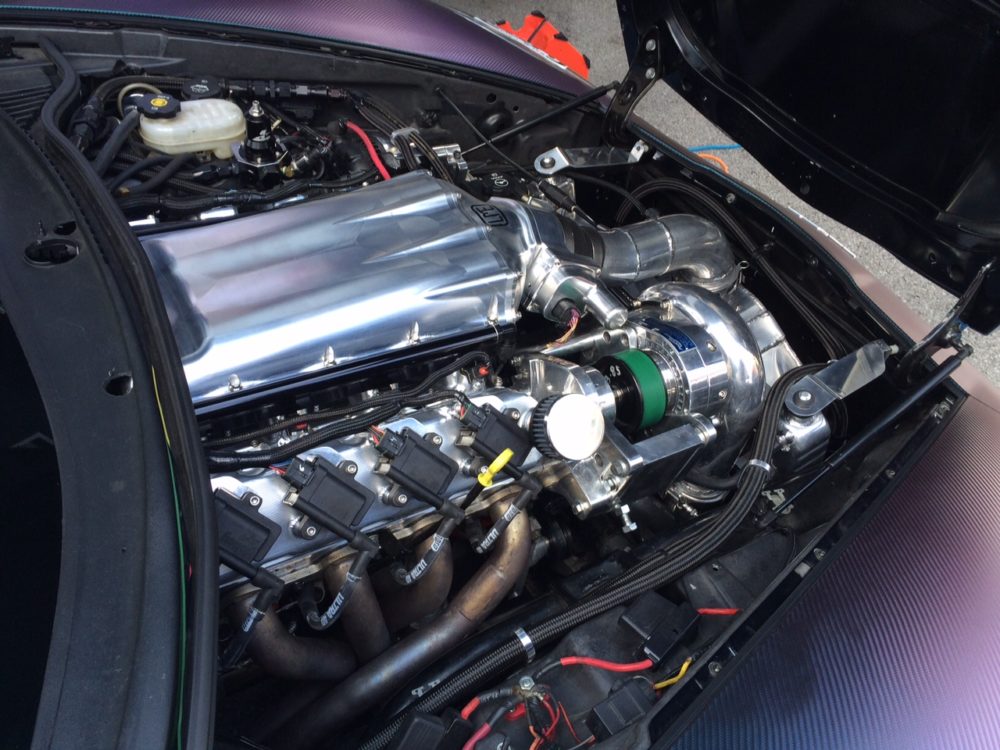
And then there’s the electronic fuel-injected C6 Corvette tuned by Richard Brannen, owner of Brannen’s Auto Works in Moline, IL. (We wrote about this car in 2015, due to our total access to it and its crew because the owner is this writer’s father.)
“We don’t have to calculate like a carb setup for barometric pressure and altitude,” Brannen said.
An air-to-water intercooler and custom ice box keep the air feeding the engine pretty steady, even on particularly hot and humid days.
“Instead of 250-degree air hitting the intake halfway down the track, ours stays closer to 140. That’s even when it’s 90 degrees,” Brannen said.
The car’s air and fuel management is mostly handled by the Holley Dominator EFI control module. There are barometric pressure sensors onboard to which the Holley system will auto-adjust. The self-learning system’s ability to adjust to barometer readings gets a little bit more accurate with each and every pass.
“The only thing I’m changing manually is timing,” he said, before retarding ignition timing for all eight spark plugs to slow the car down from its 8.54-second pass. The team is running an 8.75 index in this weekend’s NMCA Street Kings class—a field of all LS-powered cars running faster than 11-second ET.
Even that “manual” process of retarding or advancing ignition amounts to plugging a laptop computer to the Holley control module and making the right keystrokes.
…
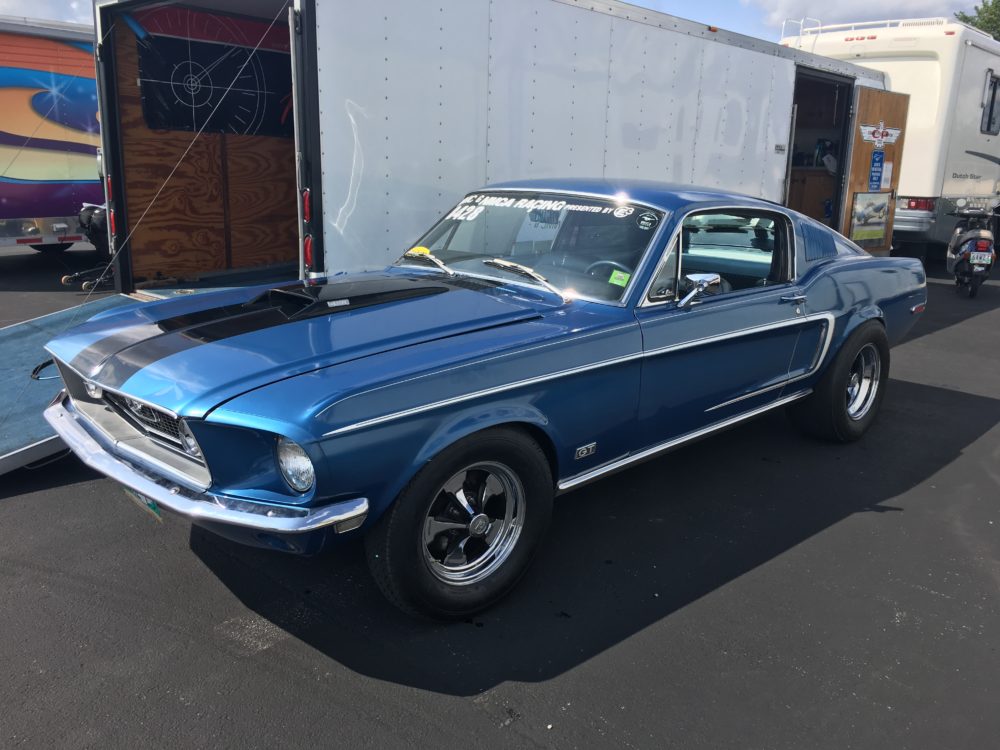
On the other end of the spectrum is Don Fotti’s almost all-original and unrestored 1968 ½ Cobra Jet Ford Mustang with just 43,000 miles. The Winnipeg, MB native has owned the car since March 1971.
Fotti is a family friend of our pal—Team Summit driver and defending NHRA Pro Stock champ—Jason Line, but we didn’t know that until we started talking to him.
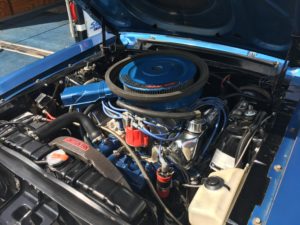
Lance Line, Jason’s brother, built the 428 Cobra Jet engine powering this car, which Fotti is running in NMCA’s Nostalgia Muscle Car class, where he’s one of the few competitors racing a car that’s also street-driven. Fotti drove the Cobra Jet in the Woodward Dream Cruise in Detroit, MI last weekend, he said.
Fotti’s Cobra Jet will run 10.3 ET, but he makes a simple throttle stop adjustment to slow it down for an 11.5 index for competitive events because he doesn’t want to install a roll cage or drill any holes in his classic in order to include the safety equipment required to participate in sanctioned racing events with a 10-second car.
Fotti is racing on drag radials. Tire pressure is of little consequence to his car’s performance so long as all four tires are measuring the same somewhere between 18-22 psi.
The relatively low horsepower the 428 Cobra Jet engine is making to run 11.5s requires less data parsing than the racers running high-hp setups.
Relative Air Density—a composite metric that combines humidity, temperature, and barometric pressure—is the only number Fotti is tracking and adjusting to.
Driving it on the street in between competition will cause some carbon build-up that many other racers don’t have to deal with, he said, but a couple of passes usually cleans it right out.
When we talked to him, Fotti had just made a 11.508-second qualifying pass at an 11.5 index, so it seems to us the man knows exactly what he’s doing.
…
The lessons from our conversations with racers and engine builders was clear: Build fast cars. Bulletproof them, if possible. And hone your skills as a driver. All of these things matter.
But developing the knowledge and tuning chops to adjust to changing weather and track conditions is a critical piece of the puzzle for any drag racer serious about walking away from a big race weekend holding the hardware.

What is file explorer and how you will get the full advantages of this most important component file explorer windows in windows 10 OS computer system, your all answer is available here so start learning for free.
Great article! https://dragonhack.site/ Thanks for this.